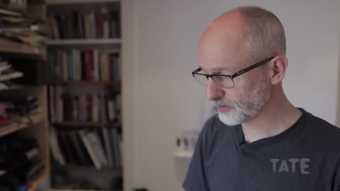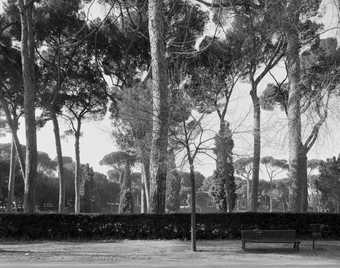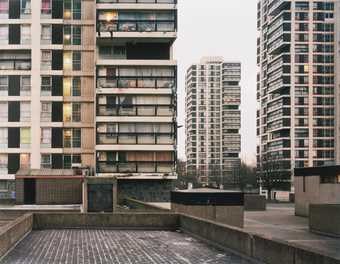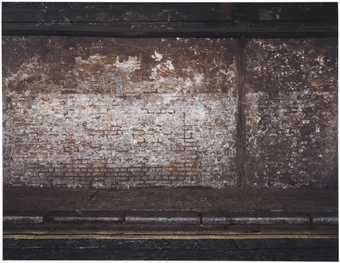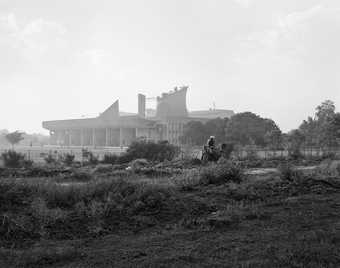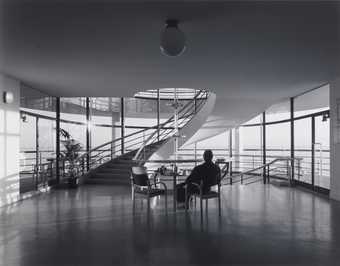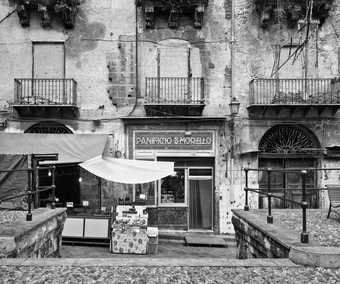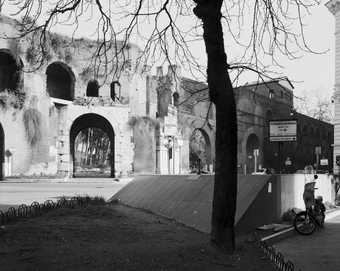John Riddy talks about walking the same route everyday as his way of getting to know a place, until, ‘after a while something will click’. In his pictures of dilapidated streets in Palermo and Corbusian architecture in India’s Chandigarh, past and present appear to coalesce.
‘The picture has to trigger things to do with after images, memories of other places you’ve been,’ says Riddy.
If you’re going to go somewhere and document it, take photographs, exhibit them, it has to be done with a certain generosity. There has to be a personal notion of what constitutes a good description of what you’ve seen, you can’t just go and spend two hours in a place and come out back with twenty photographs. It’s something that develops over a period of time.
I’ve been looking at various things related to Palermo as a city. The final trigger was two photos by Gustav Le Grey. It became a bit of a thing, well I’d really like to go there and see what the buildings are like, what the textures are like and how close the city is to the way it’s depicted in these pictures. If you look at something like this, which is one of the photos I’ve taken recently in this series there’s a, kind of, a textural correspondence in some of these pictures. Even today there’s a relationship between that road surface and these, which were in a terrible state in these pictures because the very centre of Palermo has actually changed very little since the Second World War.
I start off with a route that I walk every morning when I go to wherever I’m working. That’s a disciplined way of getting to know something rather than jumping around and thinking, but what’s round that corner, what’s round that corner. After a while something’ll click, I’ll start to get a sense of, that’s what I find interesting, look how that’s changed but that stayed exactly the same. You become, sort of, quietly aware of that kind of thing.
I started increasing the contrast levels in these areas. I’ll take out a section that I’ve worked on, say this section here, I’ll just print that up differently and I’ll stick it in to the big print and think about how the whole thing would be different. And then I’ll start to work at various areas to make them have a stronger relationship to each other. That’s the sort of circular route I have to take to end up with something that feels right and that is also mirrored in the whole process of walking and decision making and taking something that really works.
Somewhere I wanted to visit for a long while was Chandigarh which is the north Indian city designed by Corbusier. It starts with Corbusier standing in the middle of a desert looking down at a line in the ground and saying, well this is where the main street will be. And it goes from there to the city that it is today. It’s such a completely modern invention. The process of decision making about what to photograph was much more about research and documentation rather than walking around and thinking about what constitutes this place in general. The image of the Chandigarh high court building is a classic example of a bit of good luck. I’d worked out exactly where I wanted to photograph the building from, I was literally just about ready to take the photograph, having made the Polaroid, and the trader on this camel appeared. There is this, kind of, strange contradiction between modernist architecture that feels like it’s landed from some very European notion of a future world in an Indian landscape.
The last thing I want people to think, when people look at the picture, is, wow look how hard he worked at doing that. The picture’s got to simply have a self-contained existence, it has to trigger things to do with after images, memories, other places you’ve been and it can only do that when it’s fluid. And you can only, I think you can only achieve that when you’ve developed a familiarity with the subject.

